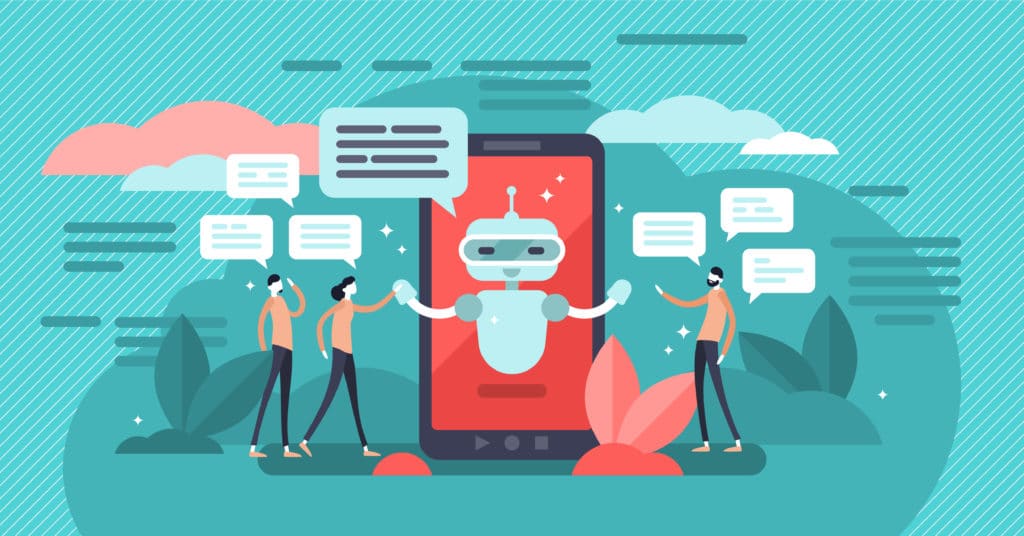As we begin 2022, many leaders have painfully come to understand that Covid-19 is still in charge of the economy and how we work. Many organizations that planned a return-to-the-office in late 2021 or early 2022, such as Google and Lyft, have postponed those plans again due to the Omnicom surge. Frankly, the return-to-the office may be history. Instead, organizations that move ahead to the Future of Work with digitized workflows will have high functioning “super teams.” They will be the winners come the end of 2022.
The encouraging news is that almost half of the organizations in a 2021 CNBC survey have switched to hybrid work models. They most often cited reasons such as productivity and their employees’ health and wellness.
The challenge for these companies in 2022 is to finish with perfecting their hybrid work models, further incorporate enabling digital technology, and find ways to reduce employee stress while improving their productivity further.
There is a roadmap for success to finish the transition to the Future (really the Now) of Work for 2022.
First, commit to hybrid working as the way you work, not a temporary fix to fight Covid-19. Study after study, such as The State of Work Report for 2021, has shown that workers are more productive when working from home. They want to continue to work from home, about three days a week, to maintain their work-life balance, stay safe, and avoid commuting time. In addition, many workers who are forced to return to work will resign and look for a company that enables hybrid working.
Hybrid working saves organizations money if they redesign the office to accommodate hybrid working and reduce unused office space. This will also free up resources to invest in digital technology. (more on that below).
Second, reduce employee stress and build resilience. Gallup and other researchers have found that workforce stress has increased in 2021, and employees are burning out. Burned-out employees have higher absenteeism and are less productive. There are many simple remedies to reduce stress, and they are highly dependent on leadership. According to research by Marcus Buckingham at the ADP Research Institute, team leaders can reduce stress by checking in frequently with each employee every week to see how they are doing. Buckingham recommends asking two questions: What are you working on this week? How can I help you? Team leaders also need to tell employees what they need to know for any crisis in the near team. The more they do this, the more resilient their workers will be.
Third, create “super teams” to rise above the hyper-change and achieve innovation. Employees work in teams in an ecosystem of networks of teams in today’s agile organizations. In addition to reducing stress and building resilience, leaders need to continually provide team members timely communications on the changing business landscape and team goals and learning opportunities for the technical capabilities and new job skills each employee will need. Afterall, the most successful teams are built on trust. Many academic studies and Google have looked at the factors that improve the productivity and innovation of teams, including having operating norms, the best experts, and the most dedicated people. The leading factor for successful teams in all these studies was trust.
Fourth, digitize the workflow. We are five years into the fourth industrial revolution. Digital technology enables robots to do what robots do best and humans to do what they do best – and in the process, they have more productive, innovative, and happy workers. Many organizations have implemented collaboration tools such as Slack and Teams. But today’s AI has gone beyond the collaboration tools of the last decade. According to the World Economic Forum’s Future of Jobs report, by 2025, humans and machines will spend almost an equal amount of time on tasks in the workplace.
All employees will be affected by automation in their workflows and improved efficiencies and productivity will be the positive results. However, the workflow cannot be digitized without improving the digital skills of all employees and embracing AI to augment business processes.

An example of how both super team and digitizing of the workforce/workplace can be achieved is using AI solutions, like MeBeBot. MeBeBot is an Intelligent Assistant that improves work productivity and saves IT, Ops, and HR teams time and money. MeBeBot enables companies to reduce the volume of individual emails and help desk tickets (that take up countless hours of valuable time every day) and empowers employees to get instant answers to their FAQs.
By shifting to an AI-powered chatbot, employees can get the support they need, when they need it, and businesses can engage and communicate with their employees to support hybrid working. And, MeBeBot is easy to install (in Slack or Teams), configure to fit your business needs, maintain over time, and scale to support your changing business needs.
MeBeBot is your affordable, one-stop bot that elevates your employees’ experience.
What makes MeBeBot different is its curated knowledge base, with over 300 IT, HR, and operations questions and answers ready to edit and use, providing accurate answers quickly for your employees across the globe. After installing the bot and configuring the FAQs, MeBeBot can be working for you and your employees in under 30 days, saving you money from day one.
Beyond supporting your employees’ FAQs, MeBeBot also provides business leaders with usage data and analytics to better understand your employees’ needs (based on the questions asked). With MeBeBot’s dashboard, you can extract valuable people analytics and gather real-time/actionable insights.
In 2021, the MeBeBot team responded to the needs of their customers and companies everywhere and launched two new features. Push messaging was a direct response to employers’ needs to communicate workplace changes, alerts, notifications and reminders to employees, using Slack and Teams (instead of email). By targeting messages to employee groups via collaboration channels, push messages were received immediately, in the “flow of work” to support hybrid workers. Additionally, to gather immediate feedback from employees, for topics around return to workplace, employee benefits, or even employee sentiment and satisfaction, Pulse surveys were launched to provide instant employee feedback. Pulse surveys, also sent via Slack or Teams, can be directed to specific employees, so that businesses can keep in touch with the needs and sentiments of their people, despite the distributed teams.
It’s time to start 2022 off right by completing your transition to the Future (Now) of Work.
About MeBeBot
MeBeBot’s Intelligent Assistant seamlessly installs as an app in Teams, Slack, or web portals to provide employees with instant automated answers to global HR, IT and Ops FAQS, real-time usage Dashboards, Push Messaging, and custom Pulse Surveys, generating instant employee feedback on of-the-moment questions. MeBeBot’s “one-stop bot” is trusted by industry leaders to elevate the employee experience so work can be more meaningful and valuable.

